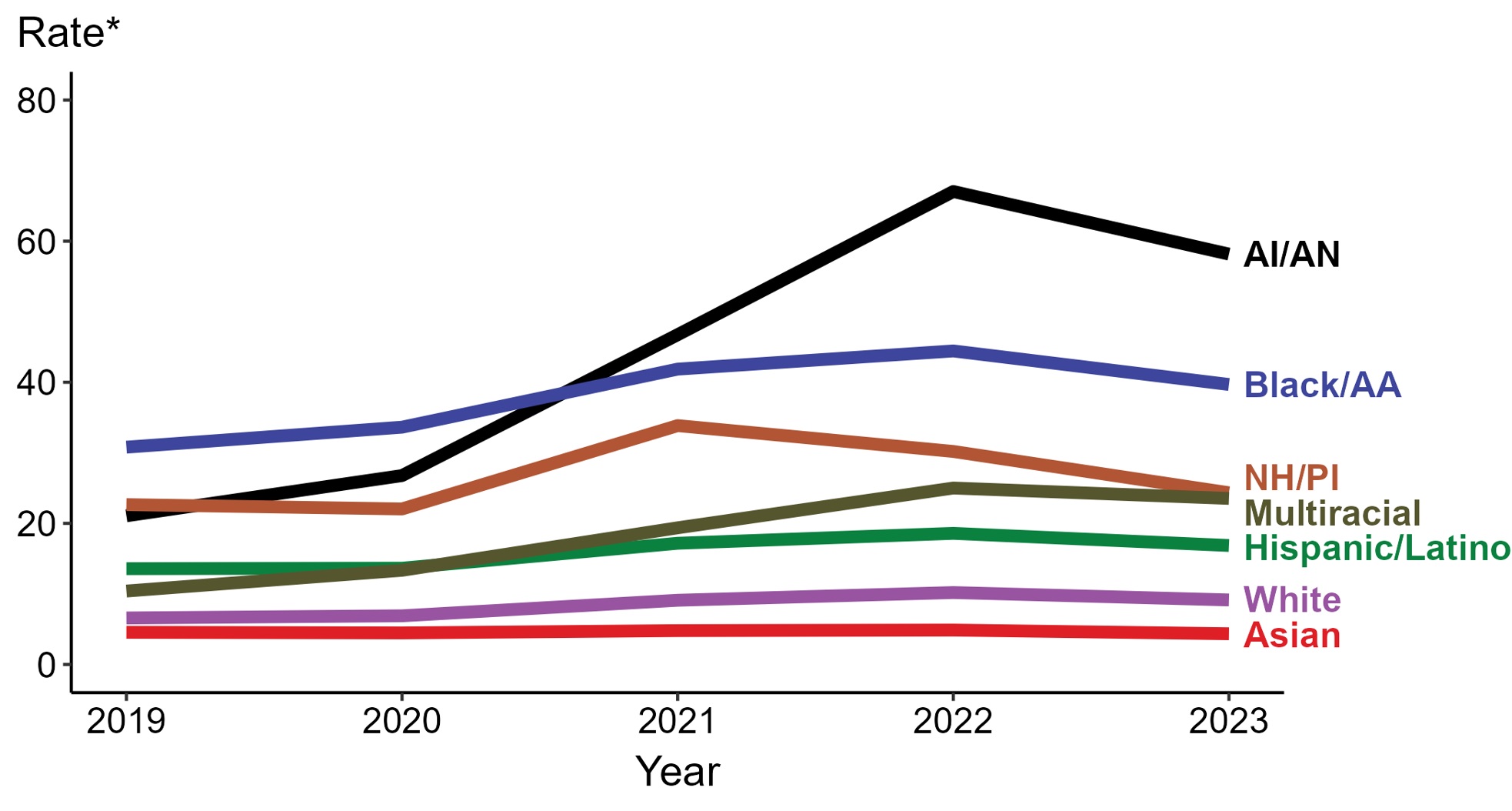Syphilis Statistics
Syphilis rates among American Indian and Alaska (AI/AN) people had the largest increase in primary and secondary syphilis of all racial/Hispanic ethnicity groups between 2018 and 2022. Congenital syphilis rates have increased for five straight years among AI/AN people, resulting in the highest rates of congenital syphilis of any racial/Hispanic ethnicity group in 2022.
View the latest data on Syphilis from the Centers for Disease Control and Prevention (CDC).
Key Statistics about Syphilis among American Indian/Alaska Native People
- Rates of primary and secondary syphilis among AI/AN people increased from 21.1 per 100,000 in 2019 to 58.2 per 100,000 in 2023.
- Between 2022 and 2023, the rate of primary and secondary syphilis among AI/AN people decreased for the first time in several years as the rate decreased from 67 per 100,000 to 58.2 per 100,000.
- Rates of congenital syphilis among AI/AN people continue to rise, increasing from approximately 200 per 100,000 in 2019 to 680.8 per 100,000 in 2023.
- In 2023, AI/AN people represented 0.7% of live births, but they accounted for 4.6% of all congenital syphilis cases.
CDC Reported Rates
Excerpt from CDC data, 2019 to 2023. This table shows primary and secondary syphilis rates by population per 100,000 people. By 2023, AI/AN had the highest rates, jumping from about 21.1 cases in 2019 to about 58.2 per 100,000 people in 2023.

Additional Data Resources
AtlasPlus is an interactive tool from the CDC that allows users to create customized tables, maps, and charts on HIV, viral hepatitis, STDs, and TB. AtlasPlus also provides access to indicators on social determinants of health (SDOH), allowing users to view social and economic data in conjunction with surveillance data for each disease.


